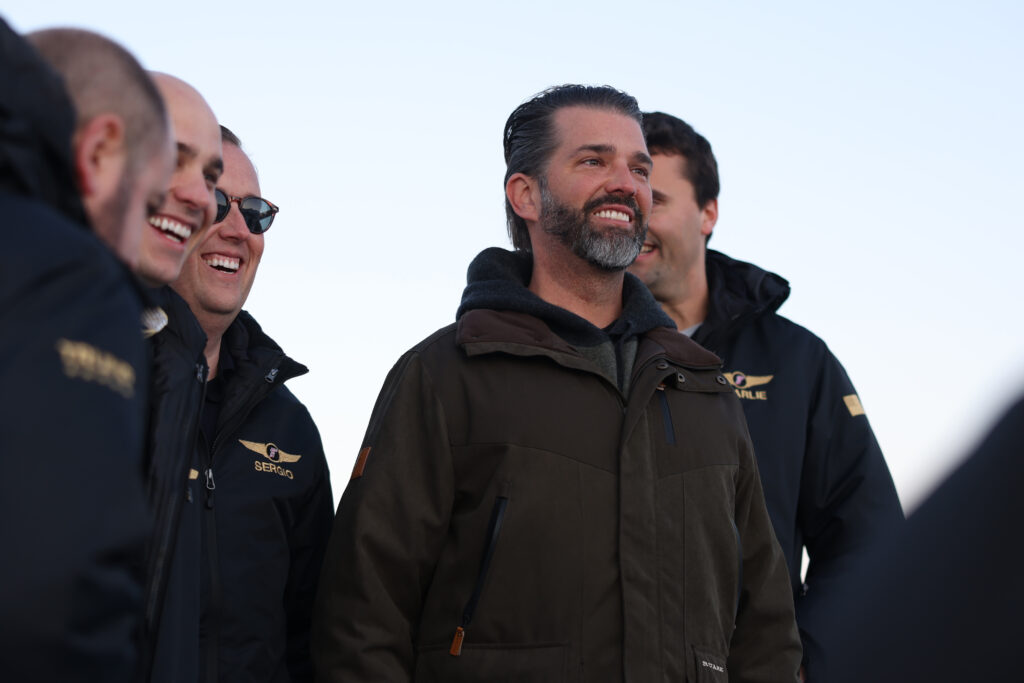A Trump Formula for Greenland: Control Without Ownership?
In the Arctic — as in the Western Pacific — the goal is to block Communist China.

Greenland’s future could be the kind of Compact of Free Association that America has with three Pacific Island states, Trump aides are telling reporters. Under these Compacts, the island nations get sovereignty, development assistance, and the right of residents to live and work in America. In return, Washington takes over defense.
In the Western Pacific — as in the Arctic — the goal is to block Communist China. The world’s largest island, Greenland is believed to be a treasure trove of oil, gas, uranium, and the kind of rare earths needed for defense and renewable energy production.
Although China is 1,000 miles south of the Arctic Circle, Beijing declares China to be a “near Arctic” nation. From east and west, China increasingly probes the Arctic. On the Alaska side, Chinese warships and military jets now routinely conduct joint patrols with Russian ships and bombers. In early October, Chinese Coast Guard vessels entered the Arctic for the first time.
In Greenland over the last five years, Chinese companies sought to rebuild the island’s three largest airports and to mine iron and uranium. Washington blocked all three projects, largely by talking to Denmark, the former colonial power that retains defense and foreign affairs responsibilities for the island.

To keep a close eye on things, Washington in 2020 opened a consulate at the island capital, Nuuk. Betting on global warming, China talks about a “Polar Silk Road,” a sea route that would pass along Greenland’s shores.
On Tuesday, in the first part of one-two punch, Donald Trump, Jr. landed in his father’s Trump-branded Boeing 757-200 private jet at Nuuk’s newly expanded international airport. While he enjoyed Nuuk’s five hours of winter sunshine, 3,000 miles to the south, in Florida, the president-elect told reporters that Greenland is needed by America for “national security purposes.” He refused to rule out the use of “military or economic coercion” to take control of the island.
In what some call a “Trump Doctrine” for the Western Hemisphere, the president-elect also said he wants to take back the Panama Canal, merge Canada and the United States, and rename the Gulf of Mexico “the Gulf of America.”
Although Greenland has only 57,000 inhabitants, acquisition of the island would be an enormous undertaking. The island is 836,330 square miles large, slightly bigger than the Louisiana Purchase of 1803. In 1867, when Secretary of State Seward was buying Alaska from the Russians, he also offered Denmark $5.5 million for Greenland and Iceland. The offer was rebuffed. During World War I, Washington had better luck, buying the Danish West Indies in 1917 for $25 million ($616 million in current dollars) and renaming them the United States Virgin Islands.
During World War II, after Nazi Germany occupied Denmark, America occupied Greenland, building air strips, four naval bases and 13 Army bases. In 1946, President Truman offered $100 million in gold bars for Greenland. The Danes again rejected the offer, equal to about $1.6 billion today. During the Cold War, however, Washington got what it wanted: Thule Air Base, an early ballistic missile warning base in northern Greenland now called Pituffik Space Base.
Now, Trump and his advisors fear, with China’s penetration of the Arctic and Russia’s aggressive program of re-opening Soviet-era Arctic bases, Greenland could be caught in a geopolitical vacuum.
“A robust U.S. Arctic strategy resonates with Trump’s broader themes of economic nationalism and resource security,” Joanna Rozpedowski wrote Tuesday on the Quincy Institute’s “Responsible Statecraft” site. “The proposed Greenland Purchase — in and of itself does not deserve the ill-conceived ridicule it has thus far received.”
With Russia and China surreptitiously cutting internet, electric and gas connections in the Baltic, Washington worries about Russian submarines patrolling and mapping the North Atlantic’s so-called GIUK gap, a crucial naval chokepoint between Greenland, Iceland, and the United Kingdom.
Reflecting mounting concern over Russian subs, the chairman of the Joint Chiefs of Staff, General Charles Quinton Brown Jr., last October visited the newly re-opened United States Naval Air Station Keflavik, on Iceland’s southern coast. Before boarding a P-8 Poseidon for a sea patrol, he told Navy personnel: “We want to be so good at what we do that every day our adversary wakes up and says: ‘Not today.’”
Denmark, a founding member of the North Atlantic Treaty, is quick to pick up the concerns of the incoming Trump Administration. On December 23, the same day that Mr. Trump first announced that ownership and control of Greenland is an “absolute necessity” for America, the Danish defense minister, Troels Lund Poulsen, announced nearly $2 billion in defense spending for Greenland. Asserting the timing was coincidental, Mr. Poulsen said the package includes two new inspection ships, two new long-range drones, two dog-sled teams, and upgrading one Greenland airport to handle F-35 war jets.
Three days earlier, Denmark’s King, Frederik X, changed the royal coat of arms to more prominently feature a white polar bear, a symbol of Greenland. As Crown Prince, Frederik took part in 2000 in “Sirius,” a four-month, 1,737-mile dog sled expedition across northern Greenland. Formed to combat Nazi German infiltration, the Sirius Patrol is an elite Danish Navy unit that enforces Danish sovereignty in the island’s thinly populated northern and eastern sections.
Popular in Greenland, Frederik met yesterday in Copenhagen with Greenland’s prime minister, Múte Egede. Mr. Egede has said that, after 300 years of rule by Denmark, Greenland should be independent.
“Greenland belongs to the people of Greenland,” Mr. Egede posted Tuesday on social media. “Our future and fight for independence is our business.”
The Danish prime minister, Mette Frederiksen, reiterated Tuesday that the territory is “not for sale.” In an interview with Denmark’s TV 2, she said: “Greenland belongs to the Greenlanders.”
Public opinion polls indicate that Greenlanders favor independence, but worry about who will pick up the bill. At present, Denmark subsidizes half of the island budget to the tune of $600 million — or $10,000 per inhabitant.
This is where Washington could step in. In the Western Pacific, Palau, population 18,000; the Marshall Islands, population 42,000; and Micronesia, population 526,000; survive as independent nations in a potentially tough neighborhood, thanks to the protection — and largesse — of Uncle Sam.
A Trump-administered Greenland would presumably diversify the economy away from dependence on fish, the source of 90 percent of export earnings. Three years ago, for environmental reasons, Denmark halted all oil and gas exploration around Greenland. According to the United States Geological Survey, offshore Greenland has the reserves to make the island an Arctic Kuwait: 17.5 billion barrels of oil and 148.2 trillion cubic feet of natural gas.
Although Greenland is the least densely populated country in the world, “community opposition” blocks most major mining projects. A 2023 survey indicates that 25 of 34 minerals deemed “critical raw materials” by the European Commission are found in Greenland.
Whichever way the island ownership fight goes, Mr. Trump’s attention is bound to increase Greenland’s one economic bright spot: tourism. In 2023, international arrivals hit 131,767, up 42 percent over the previous year. Half of the arrivals came by cruise ship, a relatively expensive way to travel.
Publicity generated by the Trump Boeing landing Tuesday on Nuuk’s new 1.4 mile air strip is expected to translate into more American visitors next summer. On June 14, United Airlines inaugurates a 10.5-hour, direct flight between Newark and Nuuk.

